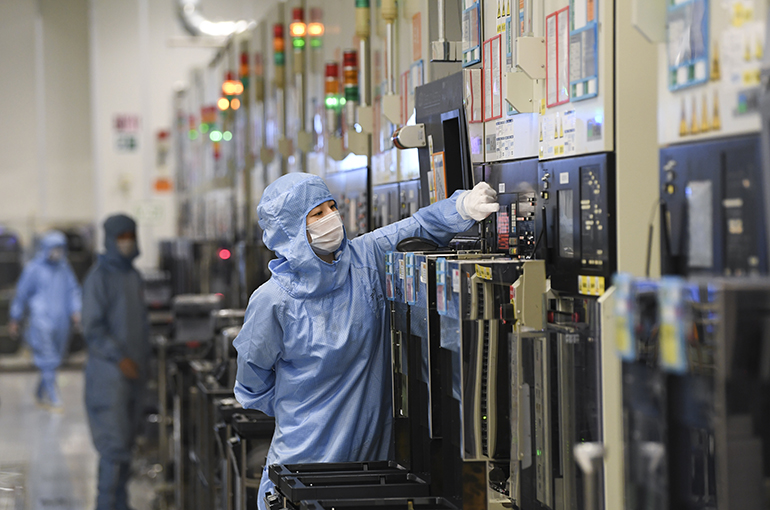 China’s Chip Spending Dip Slows in First Half, Focus Turns to Homegrown Gear, Report Says
China’s Chip Spending Dip Slows in First Half, Focus Turns to Homegrown Gear, Report Says(Yicai) Aug. 12 -- Investment in China’s semiconductor industry continued to shrink in the first six months due to the sector’s cyclical adjustments, but the decline was much smaller than last year, according to a recent report. Spending patterns are also shifting with more money flowing into chipmaking equipment as the country ramps up efforts to make its supply chains more self-sufficient.
Total investment in China’s semiconductor sector slumped 10 percent in the six months ended June 30 from a year earlier to CNY455 billion (USD63.3 billion), according to the report released by Chinese market research firm CINNO Research today. This is still a big improvement from last year when investment plunged 42 percent year-on-year to CNY683.1 billion (USD95 billion).
Semiconductor equipment was the only segment to post growth in the first half, with investment jumping 53 percent from the year before to CNY34.7 billion (USD4.8 billion). This surge reflects China’s push to localize chipmaking equipment to secure its supply chains in response to US tech restrictions, Shanghai-based CINNO said.
Investment in semiconductor materials tumbled 8 percent to CNY59.3 billion (USD8.3 billion), but the proportion of investment in high-end materials increased significantly. Third-generation semiconductor materials, such as gallium nitride and silicon carbide, accounted for 27 percent of spending in the segment, while specialty electronic gases made up 19 percent, the report said.
Despite the combined pressure of the global chip market slowdown and international tech restrictions, China’s semiconductor industry is gaining momentum through the reshaping of its investment structure. It is focusing more on equipment localization and materials innovation to lay the groundwork for the next stage of industrial upgrading, CINNO said.
Wafer manufacturing still dominates the sector, with CNY234 billion (USD32.6 billion) invested in the first six months, accounting for more than half of total spending. But this is 5 percent less than last year, suggesting that investment in mature process nodes is becoming increasingly saturated.
Investment in chip design as well as packaging and testing saw sharper declines, tumbling 24 percent and 28 percent, respectively, to CNY85.3 billion (USD11.9 billion) and CNY41.7 billion. This reflects weak demand in the consumer electronics sector, CINNO said.
By region, eastern Jiangsu province led the country with a 21 percent share of total investment, followed by Shanghai with 19 percent, southeastern Zhejiang province with 14 percent as well as Beijing and central Hubei province, both with 13 percent. Together, these top five provinces and municipalities accounted for 80 percent of China’s semiconductor sector investment.
Looking ahead, the growth trajectory of China’s semiconductor sector will hinge on three main factors, namely breakthroughs in independent innovation capabilities, the application of industrial policy tools and the flexibility to maintain international tech cooperation, CINNO said.
Editor: Kim Taylor